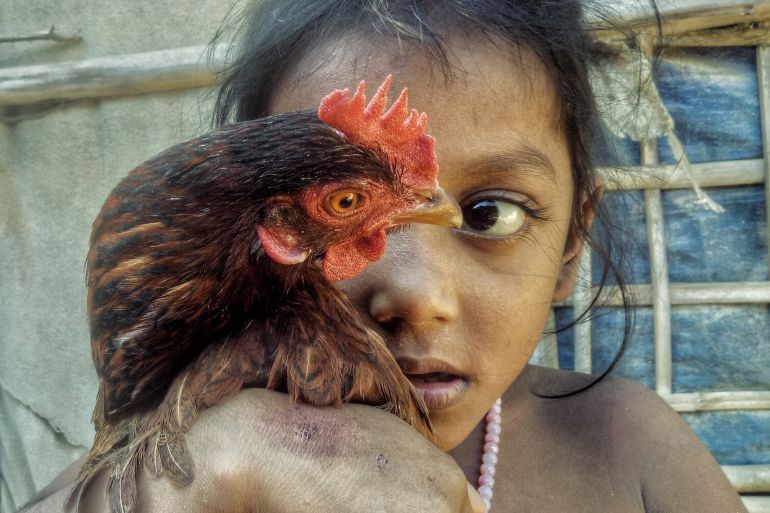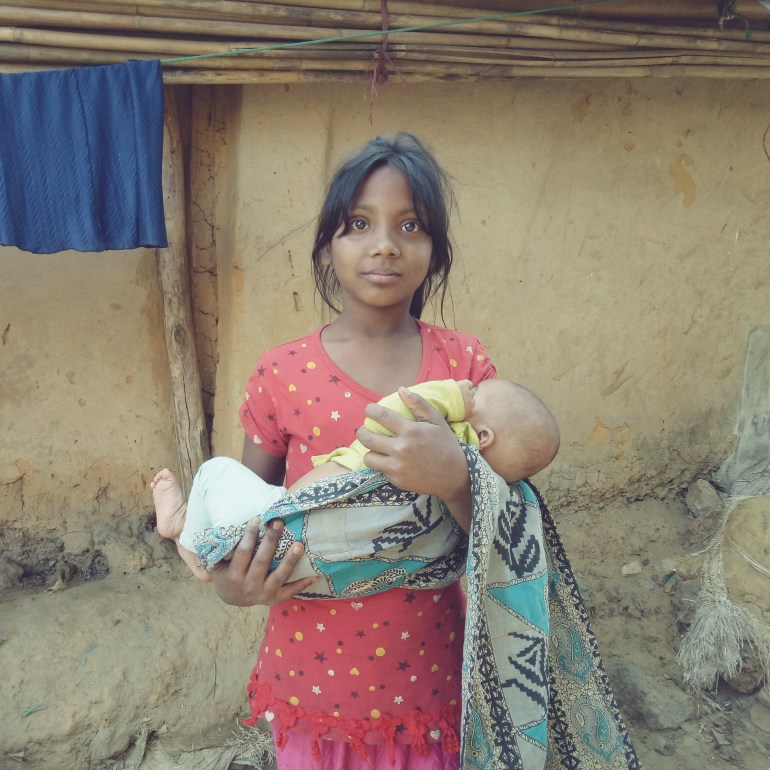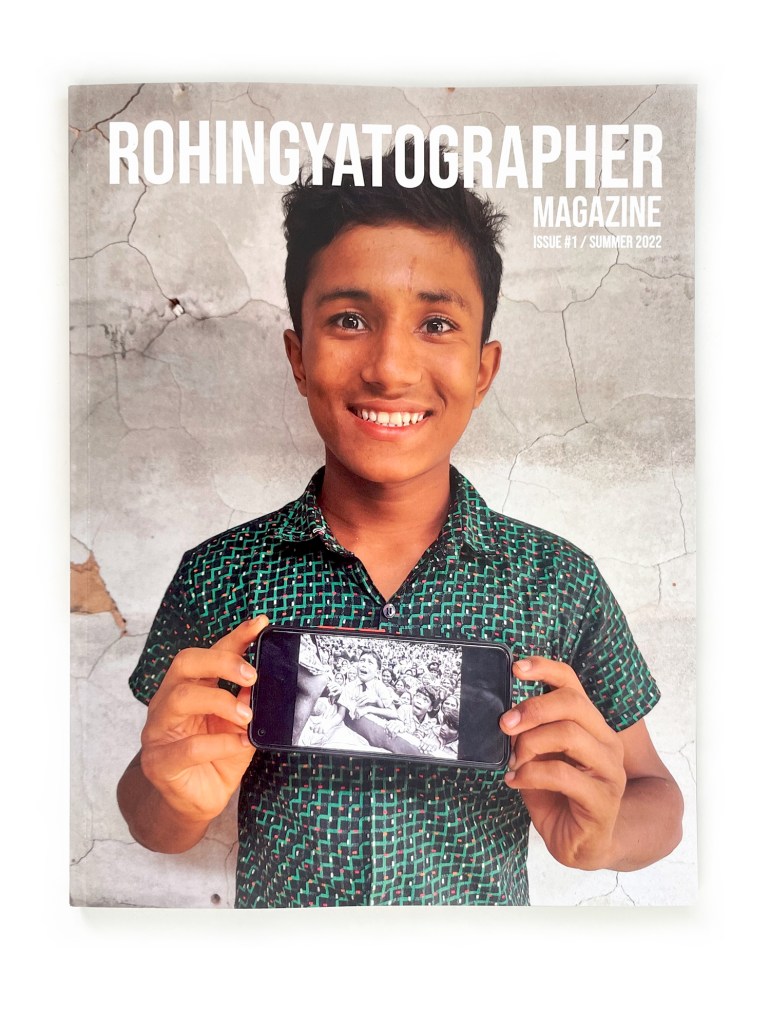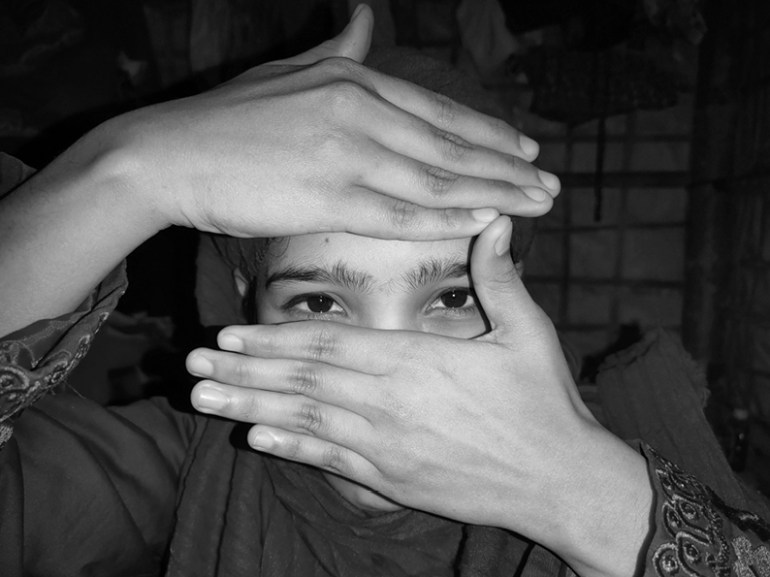‘Through our own eyes’: Rohingya refugees stage photography show
Refugees living in Bangladesh’s sprawling camps hope online exhibition and book will help world better understand their lives.

A virtual exhibition by ethnic Rohingya photographers has been launched to document life inside Kutupalong, the world’s largest refugee camp, in southern Bangladesh, in an attempt to further understanding of the lives of hundreds of thousands of mostly Muslim Rohingya who were forced to flee Myanmar five years ago.
Anra Rohingya (We Are Rohingya) focuses on the subject of identity and features the work of 11 photographers from Rohingyatographer, a magazine produced by a team based in the refugee camp.
Keep reading
list of 4 items‘It’s hell’: Rohingya refugees in Bangladesh rally to ‘go home’
At least 17 Rohingya, including children, killed in boat capsize
Six killed as hundreds of Rohingya flee Malaysia detention
Described by the United Nations as ‘the most persecuted minority in the world’, nearly a million Rohingya people are living in refugee camps in Bangladesh as a result of a brutal military crackdown in Myanmar in 2017 that is now the subject of a genocide investigation at the International Court of Justice in The Hague.
Some Rohingya also remain in camps in Myanmar’s western state of Rakhine, where their movements are restricted and closely monitored.
Years of official discrimination provide the impetus for the exhibition’s theme with successive Myanmar leaders – including Aung San Suu Kyi who was overthrown by the generals in the February 2021 coup – refusing to recognise the Rohingya as Myanmar citizens and referring to the group as ‘Bengali’.

Sahat Zia Hero, a Rohingya refugee and founder of Rohingyatographer Magazine who curated the exhibition and book, stated in a media release that “we want the world to see the Rohingya refugee community through our own eyes”.
“We want people to see us as human beings, just like everyone else and to share our hopes and dreams, our sadness and our grief with others, to make connections.”
The exhibition and accompanying first issue of the Rohingyatographer magazine depict daily life in Kutupalong.
The faces of the old and young, the hopeful and the serious, are shown throughout the exhibition, just a handful of the hundreds of thousands of faces that make up the displaced Rohingya.
There are also the faces of babies born since 2017, of which Save the Children reports there are more than 100,000.
That the likelihood of any form of repatriation to their homelands in Myanmar is increasingly unlikely under the military means that Kutupalong may be the only home they know for years to come.
‘Sense of hopelessness’
Camps such as Kutupalong have existed in Bangladesh since the early 1990s, when an earlier military regime displaced about a quarter of a million Rohingya across the border, which is marked by the River Naf.
Md Jamal, one of the Rohingya photographers featured in the exhibition and book, was born in Kutupalong in 1991.
He told Al Jazeera that he started photography “to show the world how the Rohingya refugees have been tortured”.
“I hope our audience will be interested in seeing the life of the Rohingya refugee community through our own eyes,” he said.
Jamal – who cannot reveal his full name for fear of persecution – also told Al Jazeera that the medium helped him to deal with the trauma he has experienced.
With Myanmar rejecting the Rohingya as citizens, the group is stateless.
Their very identity – Rohingya – has also been condemned, with the military claiming the ethnic group to be ‘Bengali’ interlopers who do not belong in Myanmar.
Such rhetoric has fanned the flames of resentment towards the Muslim minority group among Myanmar people, who are mostly Buddhist, garnering popular support for the repeated attacks on the group over the last few decades.

Aung San Suu Kyi, a Nobel Peace Prize laureate, even travelled to The Hague to defend the military over the claims of genocide.
“Each photographer has his own individual visual language,” Jamal said. “I myself am still learning to use photography to learn about observation. But also it helps me to deal with and embrace the problems we face every day living here.”
Within Myanmar, tens of thousands of Rohingya have been interned in camps in Rakhine since 2012.
Those who live there are subject to strict restrictions limiting their freedom, movement and civil rights.
A recent Human Rights Watch report documenting 10 years since the Rohingya were forced into camps reveals that conditions have worsened since the coup.
“The situation has only deteriorated in the last ten years,” Human Rights Watch Asia Researcher Shayna Bauchner told Al Jazeera.
“When we talk to Rohingya in the camps there’s just this pervasive, extreme sense of hopelessness that anything will change.”
Rohingya in the camps lack access to education and medical aid and are tightly monitored by strict travel restrictions, which make it difficult for them to work.
About 600,000 Rohingya who survived the 2017 atrocities remain in villages in the Myanmar countryside but face similar types of restrictions to those in the camps.
“The restrictions on both are very similar whether they are in camps or villages,” said Bauchner. “The system of apartheid the military has imposed applies to all Rohingya regardless of where they are living.”
Bauchner says the international community needs to bear some responsibility for what has happened to the Rohingya.
“In 2012 if the international community had recognised the military’s crimes as ethnic cleansing and crimes against humanity and had taken action to hold the military accountable, the ten years that followed may have looked really different,” she said.
Need for safe return
Ronan Lee, author of Myanmar’s Rohingya Genocide, told Al Jazeera that the 2021 military coup – in which Senior General Min Aung Hlaing seized power – had only compounded the misery of Rohingya on both sides of the border.
“Min Aung Hlaing – having more power than he did in 2017 when he masterminded the genocidal forced deportation of most Rohingya out of Myanmar and into Bangladesh – is a terrible outcome for the Rohingya,” he said.
“The military doesn’t regard the Rohingya as a legitimate part of Myanmar’s national or political fabric. The military don’t want the Rohingya in Myanmar, that’s why they have undertaken a genocide against the group.”
Lee says the situation for Rohingya who remain either in villages or refugee camps within Myanmar was “incredibly perilous”.
“This is a military that has shown itself to be prepared to turn its guns on peaceful protesters all over the country who are members of the Buddhist majority,” he said.
“Let alone what they might do to members of a Muslim minority that they’ve already undertaken a genocide against.”
For the Rohingya across the border in Bangladesh, Lee says the prospect of returning to their homes was now nearly impossible.
“The Rohingya want to return to their ancestral lands, they want to return to Myanmar, but they want to return when it’s safe,’ he said.
“They shouldn’t be presented with a choice of returning to an unsafe Myanmar or staying indefinitely in refugee camps in Bangladesh.”

Lee believes the international community has a responsibility to ensure a peaceful and safe outcome for the Rohingya.
“It’s the job of the international community to make the situation safe for them,” he told Al Jazeera.
“It shouldn’t be tolerated that a genocidal military regime stays in power in Myanmar and prevents the return of the Rohingya to their ancestral lands.”
Photographer Md Jamal told Al Jazeera that, like most Rohingya, he wants to return to Myanmar, but only when it is safe.
Until then, he said, “I plan to continue photographing the Rohingya refugees.”
Anra Rohingya (We Are Rohingya) and Rohingyatographer Magazine can be viewed here.